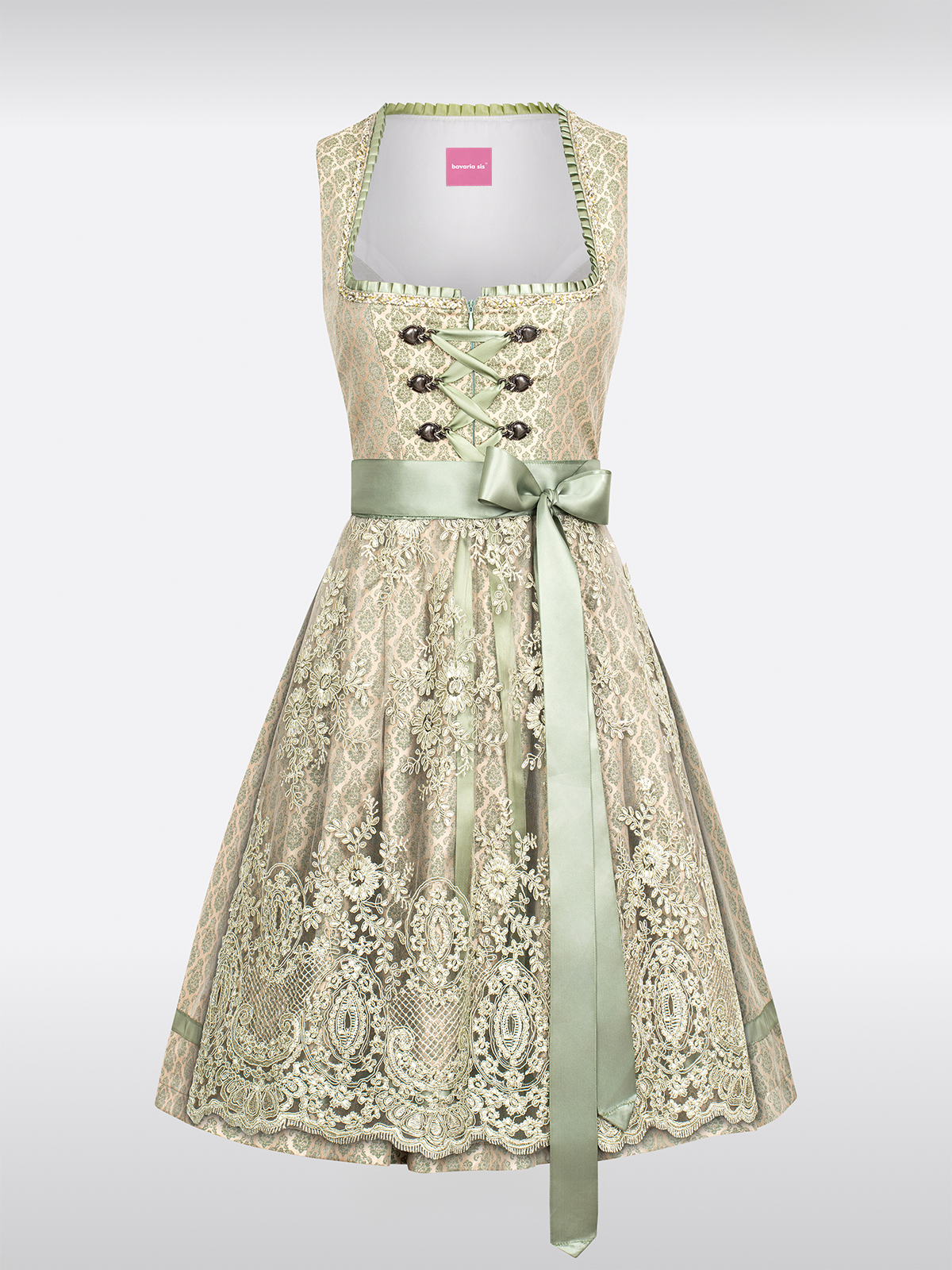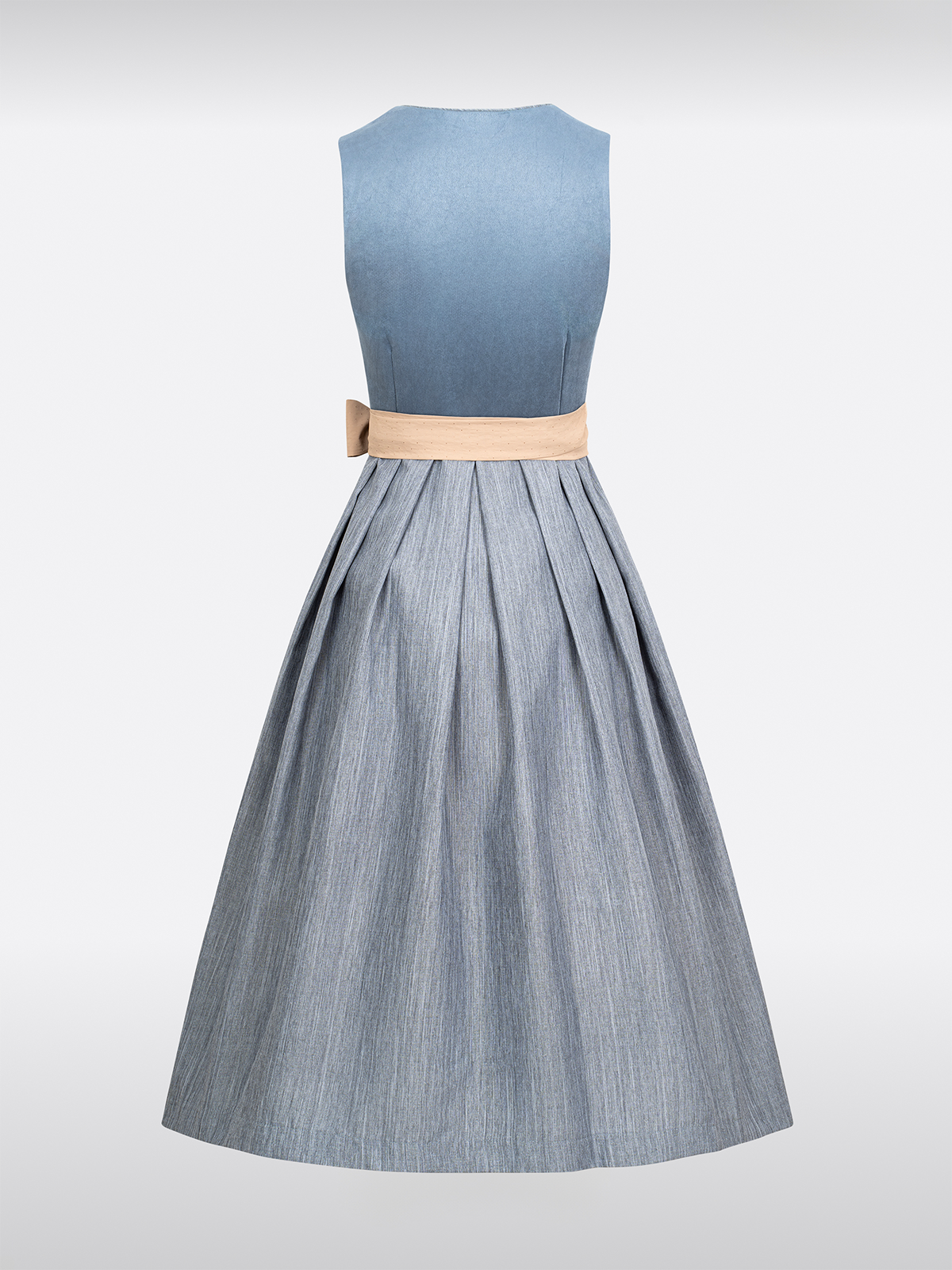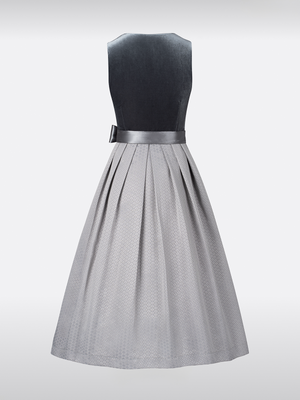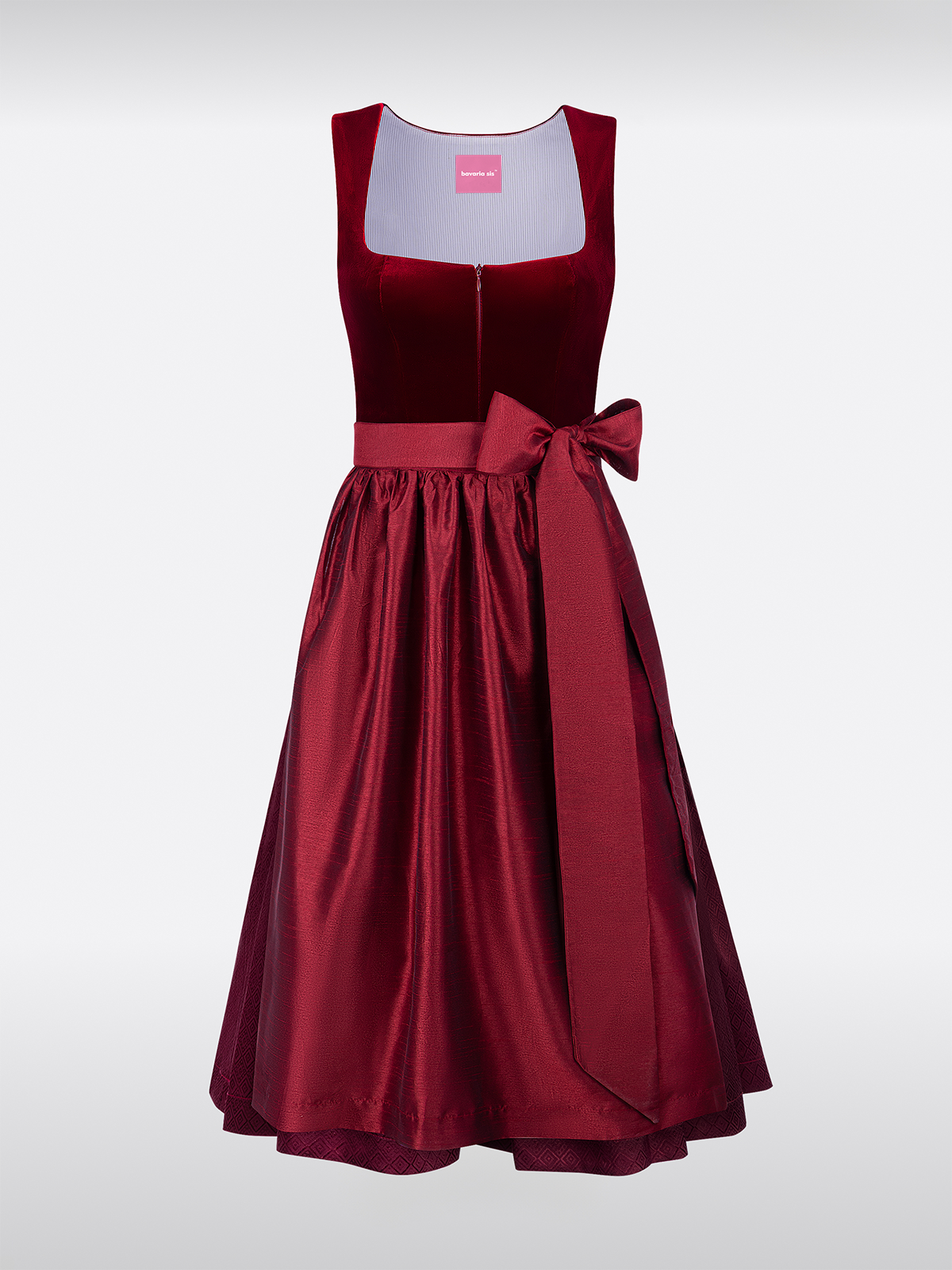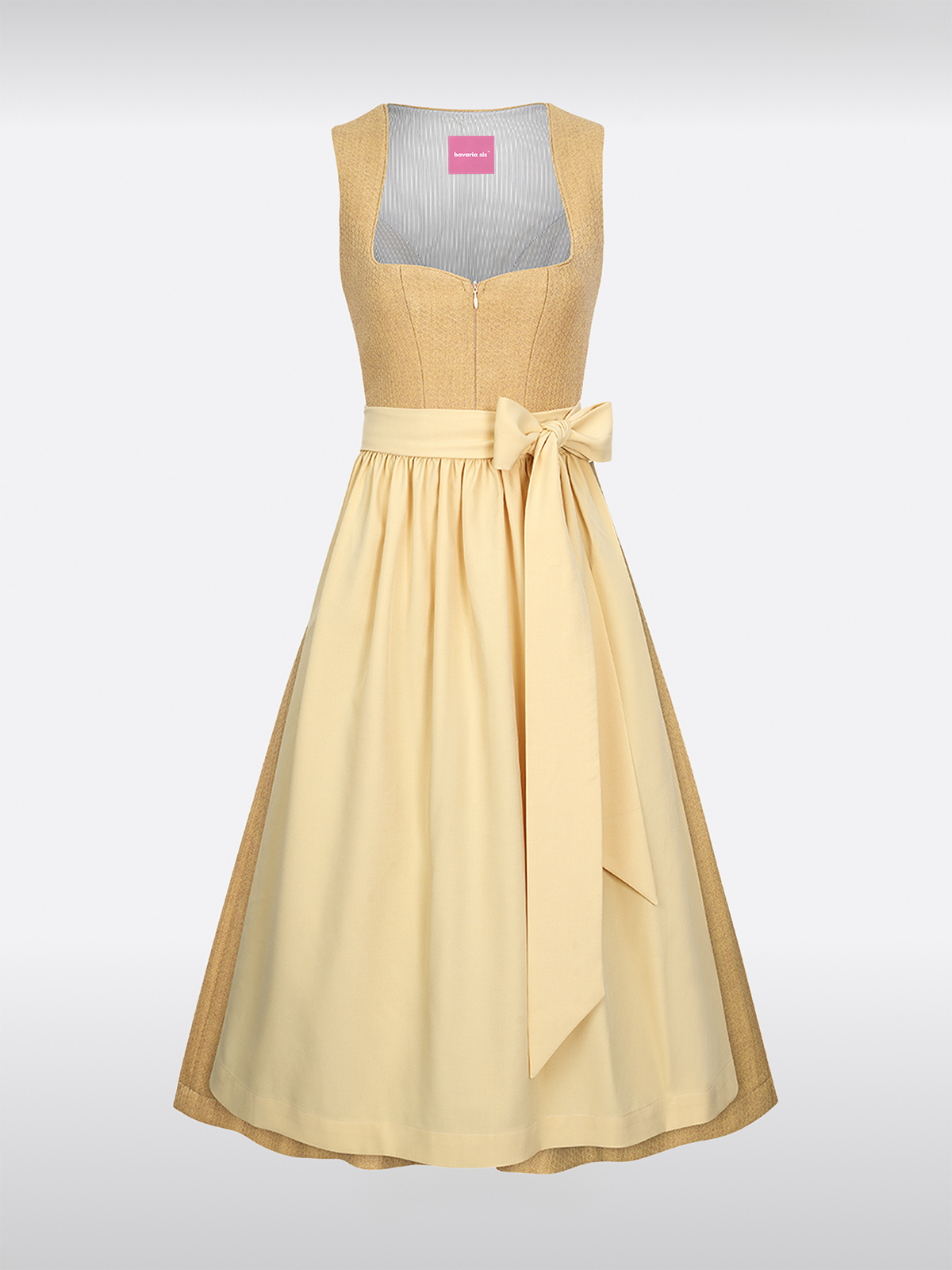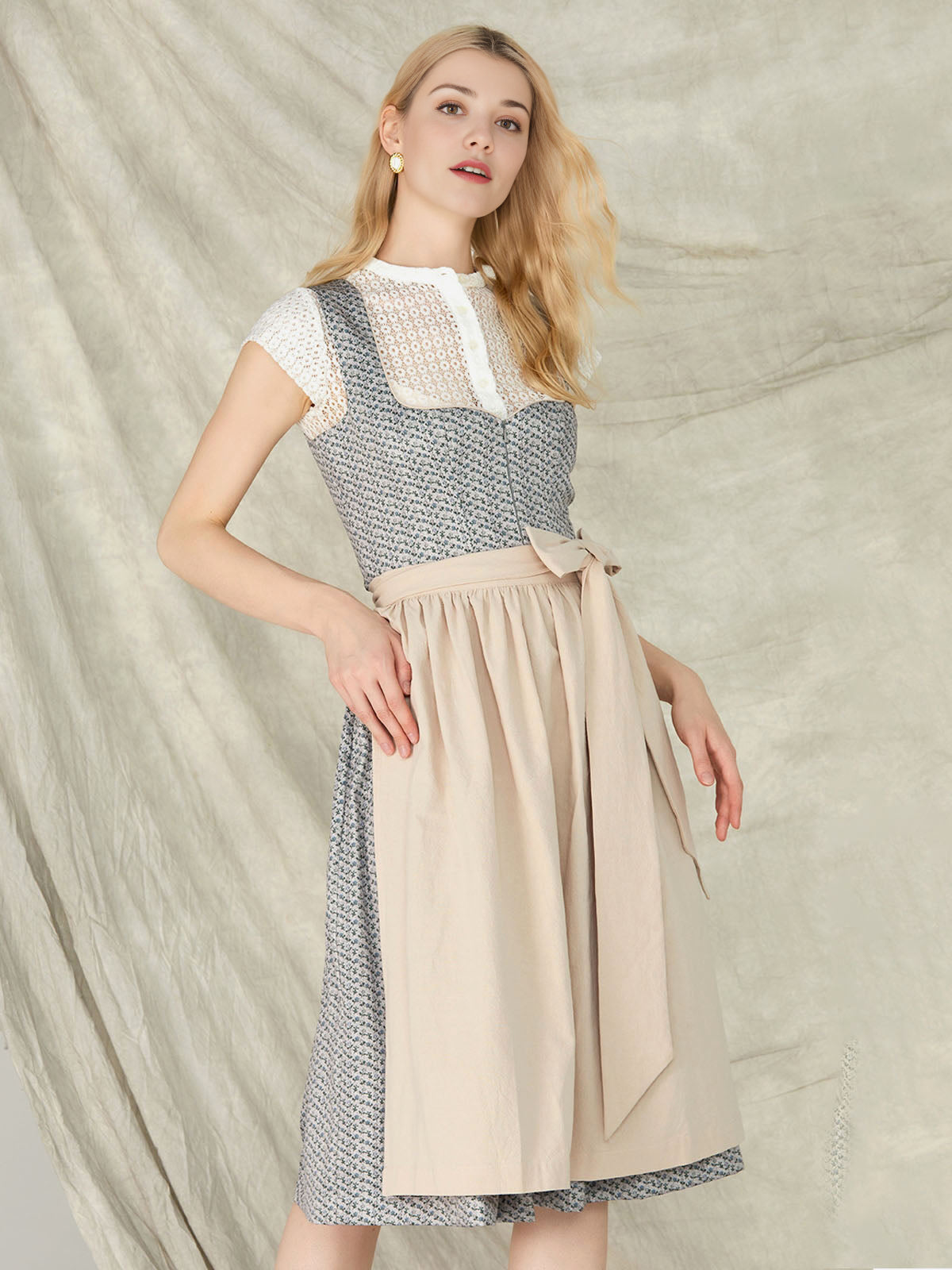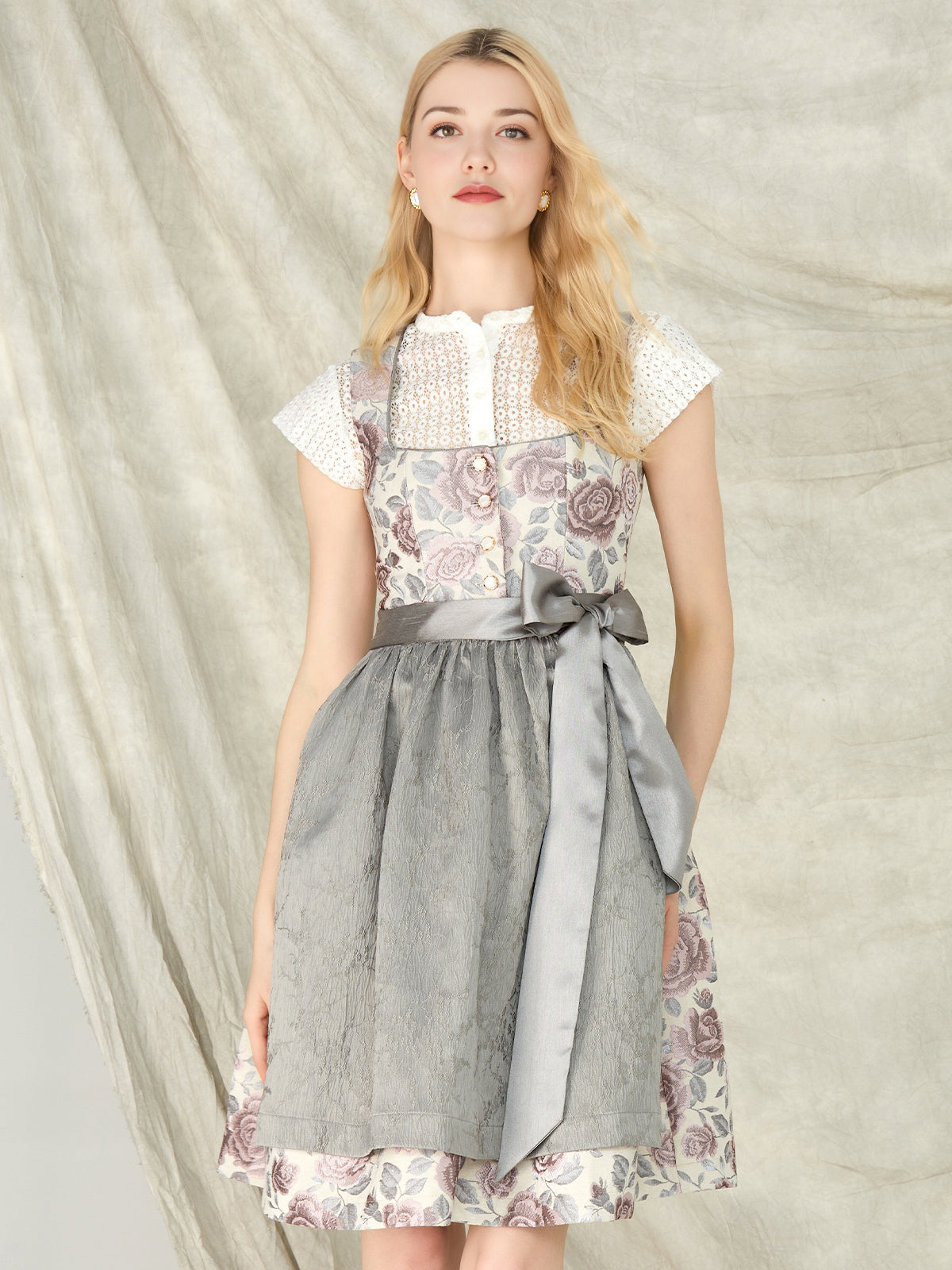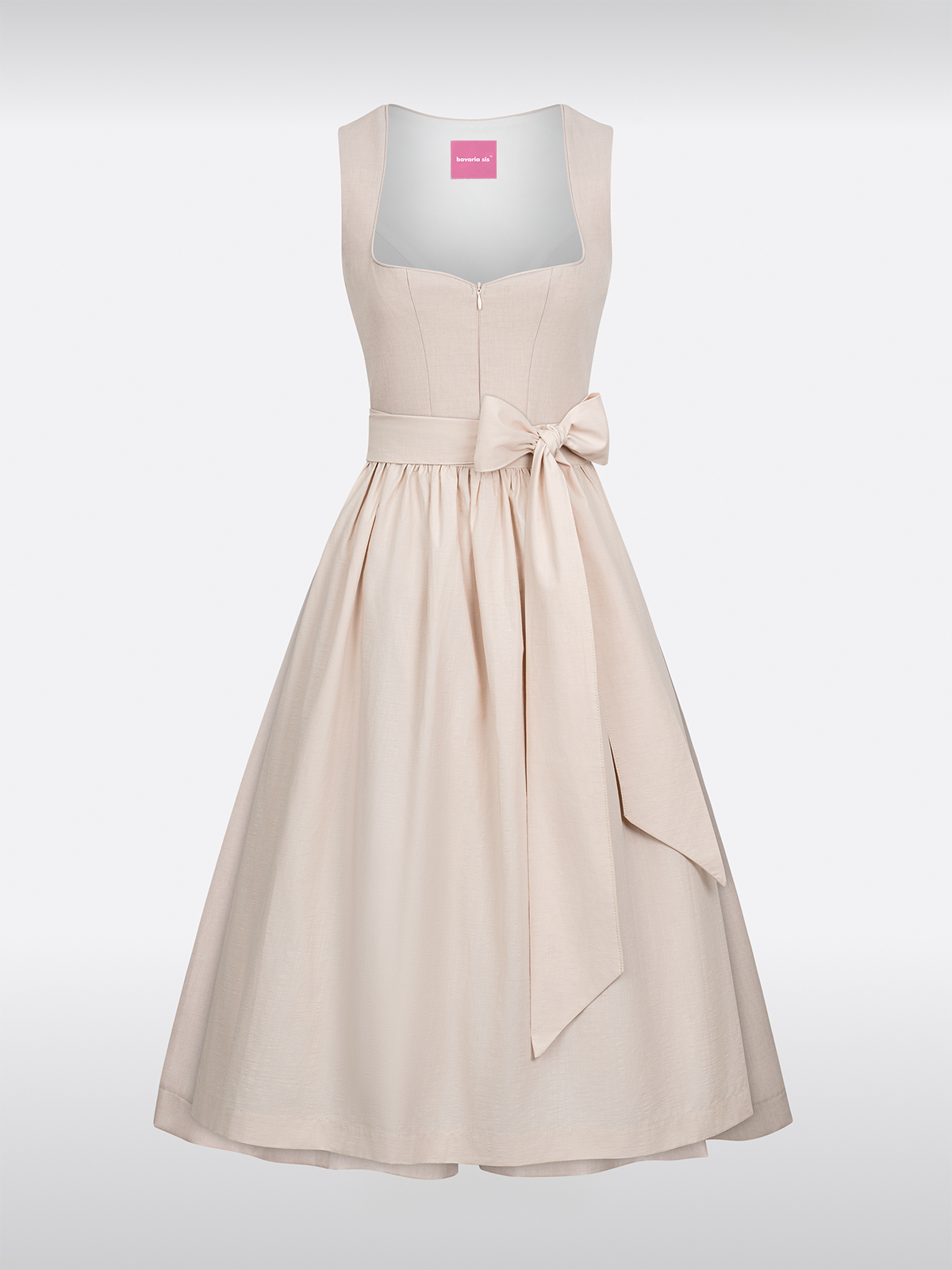Sustainable fashion
In recent years, sustainability has become increasingly important in the fashion industry, and this also applies to dirndl fashion. More and more brands are focusing on sustainable materials such as organic cotton, recycled fabrics, and natural dyes. They are also paying attention to fair working conditions and responsible production.
Exemplary brands
- Alpenrose Trachten: This brand uses exclusively organic cotton and recycled fabrics for its dirndls. It also supports local producers and maintains fair working conditions.
- Green Dirndl: This brand focuses exclusively on sustainable dirndls. All products are made from recycled or natural materials, and production takes place in Germany in compliance with strict environmental standards.
Modernization of traditional elements
The classic
Dirndl - Design is increasingly being combined with modern cuts and colors to create a contemporary and stylish look. This allows the dirndl to be worn not only for Oktoberfest, but also for other occasions.
Combination of tradition and modernity
- Cut variations: Instead of the classic tight bodice and voluminous skirt, modern cuts such as A-line or empire lines are increasingly being used. This gives the dirndl a more elegant and contemporary appearance.
- Colors: In addition to traditional Bavarian colors like red, blue, and green, modern colors like pastels, metallic shades, and neon colors are also used. This gives the dirndl a fresh and exciting touch.
Practical examples
- The blue dirndl with silver - metallic trim: A classic blue dirndl is decorated with silver - metallic trim, creating a modern and glamorous look.
- The pastel dirndl with an A-line cut: A dirndl in a bright pastel shade with an A-line cut looks elegant and contemporary.
Individualization and adaptability
Many brands now offer the option of customizing dirndls. This includes choosing the color, pattern, embellishments such as lace or embroidery, and even the fit.
Types of adaptability
- Color choice: Customers can choose from a variety of colors to perfectly match their dirndl to their preferences.
- Embellishments: It is possible to add lace, embroidery or other embellishments to the dirndl to personalize it.
- Fit: Some brands offer the option of adjusting the dirndl to the customer's individual measurements to ensure a perfect fit.
Examples of individually tailored dirndls
- A yellow dirndl with hand-embroidered flowers: A yellow dirndl is decorated with hand-embroidered flowers to make it unique.
- A light yellow dirndl with lace decorations: A light yellow dirndl is decorated with lace decorations to create a romantic and elegant look.
The future of dirndl fashion
The future of dirndl fashion appears promising. With increasing sustainability and the integration of modern trends, the dirndl will remain a popular garment in the future.In addition, the customization and adaptability of dirndls will continue to increase in order to meet the individual needs of customers.
future trends
- Technological innovations: There are increasing attempts to incorporate technologies such as 3D printing or smart textiles into dirndl production in order to open up new design possibilities.
- Cultural interaction: Dirndl fashion will continue to interact with other cultures and fashion trends to develop new and innovative designs.

